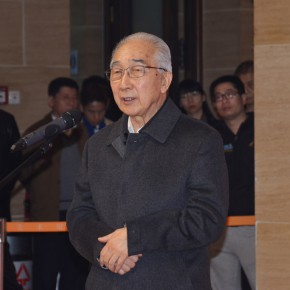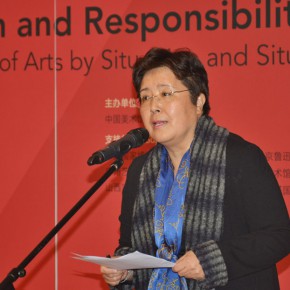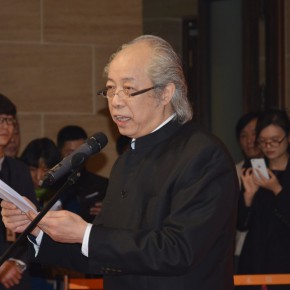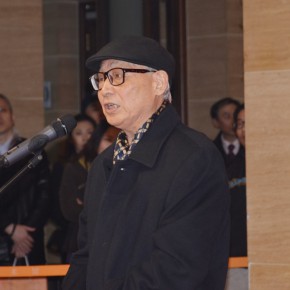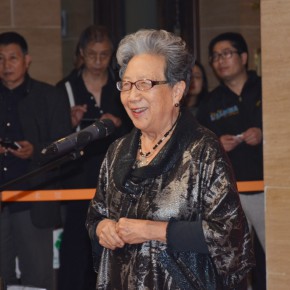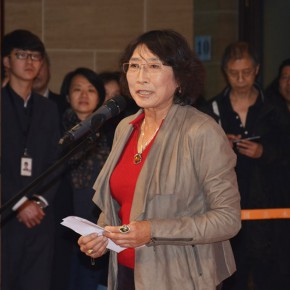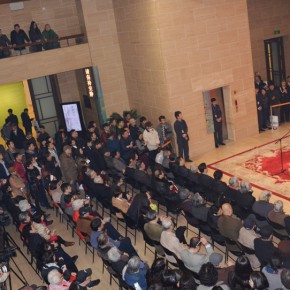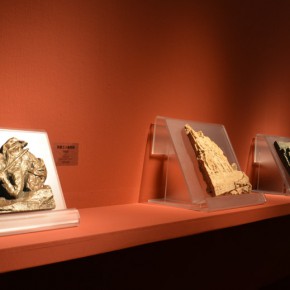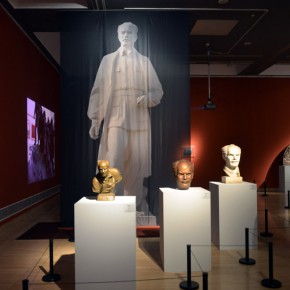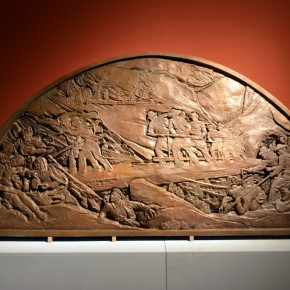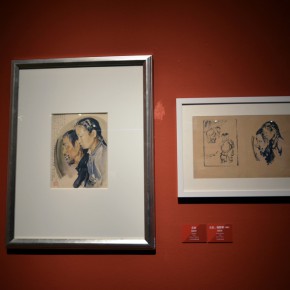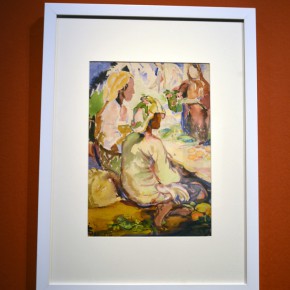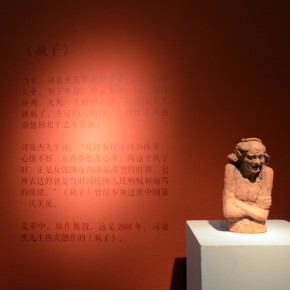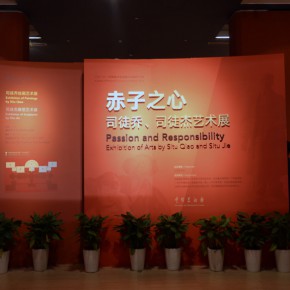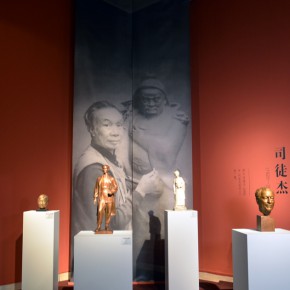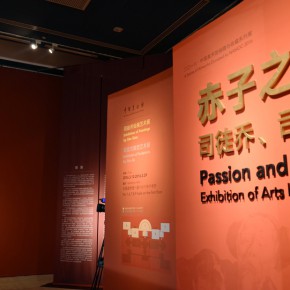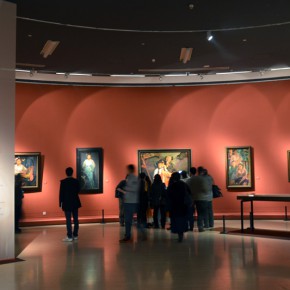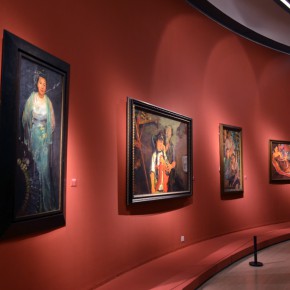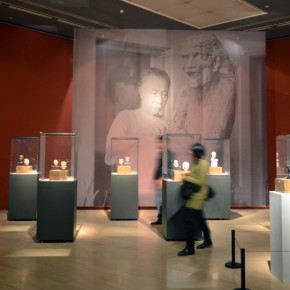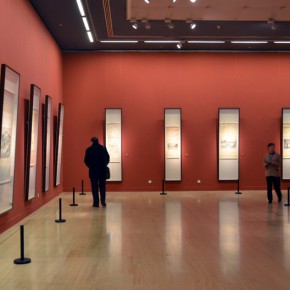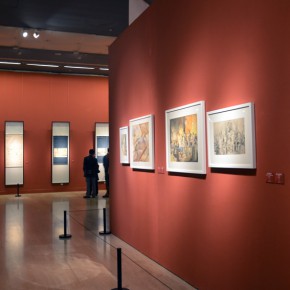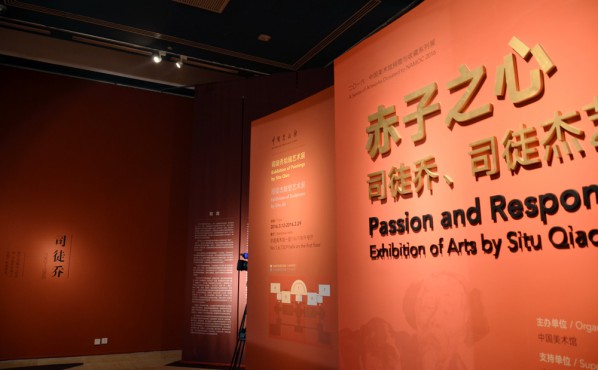
On the afternoon of March 16, 2016, “Passion and Responsibility – Exhibition of Arts by Situ Qiao and Situ Jie” commenced at the National Art Museum of China. Hosted by the National Art Museum of China, this exhibition is part of the “2016 National Art Museum of China Donation and Collection Series Exhibitions”. The opening ceremony was presided over by the Vice President of the National Art Museum of China An Yuanyuan, Deputy Minister of the Ministry of Culture Dong Wei, Honorary President of China Artists Association Jin Shangyi, Party Secretary of National Art Museum of China You Qingqiao, art critic Prof. Shao Dazhen from CAFA, former President of the Central Academy of Arts and Crafts Saone Chang, the famous sculptor Prof. Sheng Yang from CAFA, Deputy Party Secretary of CAFA Wang Shaojun, the sculptor Prof. Cao Chunsheng from CAFA, Vice Presidents of National Art Museum of China Hu Wei and Zhang Zikang, Vice Chairman of the Federation of Returned Overseas Chinese Kang Xiaoping, Vice Chairman of the China Soong Ching Ling Foundation and consultant of the Federation of Returned Overseas Chinese Tang Wensheng, President of Academy of Arts & Design, Tsinghua University Lu Xiaobo, Dean of the School of Global Innovation at Tsinghua University, and other scholars and artists attended the opening ceremony.
Exhibition site: graphic painting and three-dimensional sculptureSitu Qiao was an outstanding Chinese realistic artist of the 20th century, and he was appreciated and guided by Lu Xun at the beginning of his exploration of painting, with the use of brushes he threw himself into the Chinese new-democratic revolution wave with his diligence that continued through his life, his works reflect people’s lives and social suffering with a deep humanitarian spirit; and Situ Qiao’s younger brother Situ Jie was a famous sculptor and sculptural teacher in our country. He taught at the Department of Sculpture, CAFA from the 1950s to 1980s, he presided over the “Modern National and Traditional Sculpture Studio”, upheld the development idea of modern national sculpture “to combine the Chinese and the Western styles, based on the nationality”. Situ Jie made a contribution to the fusion of Chinese and Western styles, explored traditional local art, and further studied folk sculpture, to create sculptural art with an unique national spirit and personal style in the field of sculptural art creation and art education of China.
The exhibition constitutes the paintings of Situ Qiao and Sutu Jie’s sculptural art, which reflects the different forms and styles of the brothers living a similar life, kinship and a common cultural ideal. Director of National Art Museum of China wrote in the foreword that, “In the cultural history of the Chinese nation, there is a phenomenon worthy of studying that the grandfather and grandson, the father and son, brothers, the husband and wife, and even the whole family are luminaries, they make an immortal contribution to the nation and country, and have been recorded in history. It is related to the time, region and family tradition, and its core is the family-country feeling, the reflection of individual life and value pursuit in the dual intersection of patriotism and the historical context. In further study of this phenomenon, it researches the law of cultural ecology, at the same time, it can lead to better understanding of the natural attribute and cultural attribute, and the relationship with racial inheritance and cultural heritage.”
Situ Qiao’s painting – “Innestehen for people”?Some of Situ Qiao’s paintings present more than 200 works and documents, divided into six themes included Glancing Back of the Classics, Bright and Beautiful Images, Drawing of Xinjiang, Survey of Five Provinces Suffering Natural Disaster, Landscapes of the Journey, and Deep Feelings of the Homeland, to present the weight and performance of the artist during the suffering of Chinese social reality and the requirements of the era to save the nation from subjugation in the first half of the 20th century. His works showcase the passionate emotion driven by conscience; the faith of justice is through the selection of the themes to establish the pursuit of the steadfast destiny of people. Shao Dazhen addressed the opening ceremony and said, “In the 20th century of Chinese art history, Situ Qiao was an indispensable artist, who is a forward leader of the era, he absorbed national traditions and nutrition, created work that reveals Chinese people’s joy and suffering.” Jin Shangyi is reminded of Situ Qiao’s classic work “Put down Your Whip”, he said the painting had deeply influenced him. Situ Qiao’s daughter Situ Shuang talked about the repairing of Situ Qiao’s painting and expressed her gratitude to the National Art Museum of China.
Situ Jie’s sculpture – “I only work rather than asking for a harvest”The part of Situ Jie’s sculpture includes precious original gypsums and clay sculptures, divided into three themes including The Use of Monuments to Set Up Historical Souls, Shaping to Convey the Meaning, and The Mind Gives Birth to Images, to witness the individual exploration and practice of modern national sculptural developmental ideas namely the “combination of Chinese and western, based on the nation” upheld by Situ Jie. Especially “The Use of Monuments to Set Up Historical Souls,” this presents Situ Jie’s monumental sculpture – “Statue of Norman Bethune”, as well as “Chinese Railway Workers in Canada”, etc., which are the individual and characteristic sculptural art exploration of Situ Jie in the social evolution and era of the 20th century. Jin Shangyi said that, “Situ Jie’s ‘Statue of Norman Bethune’ was the best work of character sculptural monuments at that time.
Situ Jie’s daughter Situ Ping recalled her father’s artistic creation at the opening ceremony, and said he adhered to his inner faith, insisted on his own style even under hard conditions. Even if life was hard, his artistic creation was not admired. “I only work rather than asking for a harvest”, she said the biggest wealth left by her father was a “pure heart”.
At the end of the opening ceremony, the families of Situ Qiao and Situ Jie were awarded donation certificates by the Deputy Minister of the Ministry of Culture of China Dong Wei. The exhibition continues to March 29, 2016.
Text and photo by Lin Jiabin, translated by Chen Peihua and edited by Sue/CAFA ART INFO.


